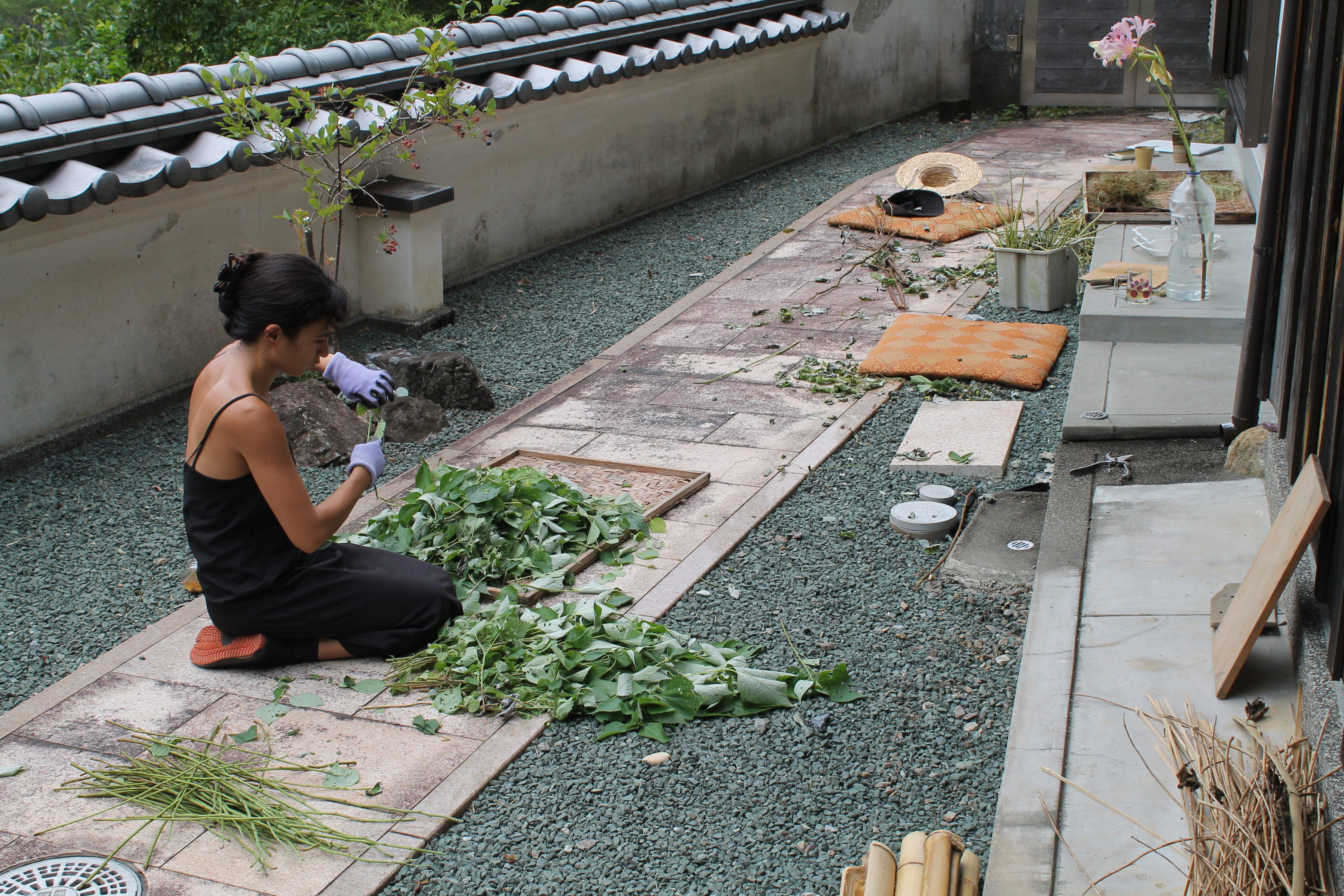



. * . * . * . * . * . * . * . * . * . * . * . * . * . * . * . * . * . * . * . * . * . *. * . * . * . * . * . * . * . * . * . * . * . * . * . * . *
Raw Material Processing
/steps/
Collect → Namahagi(raw stripping) → Heguri (removing green/bark of raw material)→ Dry/tools/
Plastic bag; Kama; Gloves; Heguri knife; Wooden board; Bamboo board; Clothes pin. * . * . * . * . * . * . * . * . * . * . * . * . * . * . * . * . * . * . * . * . * . *. * . * . * . * . * . * . * . * . * . * . * . * . * . * . *
Collect
Collect material at the farm while weeding
Let the material sit and “steam” in the plastic bag → easier to keep it moist instead of letting plant dry
Ideally, pull plant out from the root → sometimes the root system is developed, which makes it hard to grab the entirety of the plant
relatively short
Namahagi
Break the lower end of the stem to separate inner branch and the outer layers of the plant (i.e. bark)
Strip off → ideally with a greater surface area to make heguri easier
long time
Heguri
Using the strips of the outer layer of the plant, remove the bark and the green layer to isolate the fiber as much as you can
Organize in different piles
long time
Rinsing
Rinse the strips in a large bucket of water to remove any left over debris before it dries
short
Dry
-
Bundle the processed material and hang it dry or lay it on a board in the sun
short
. * . * . * . * . * . * . * . * . * . * . * . * . * . * . * . * . * . * . * . * . * . *